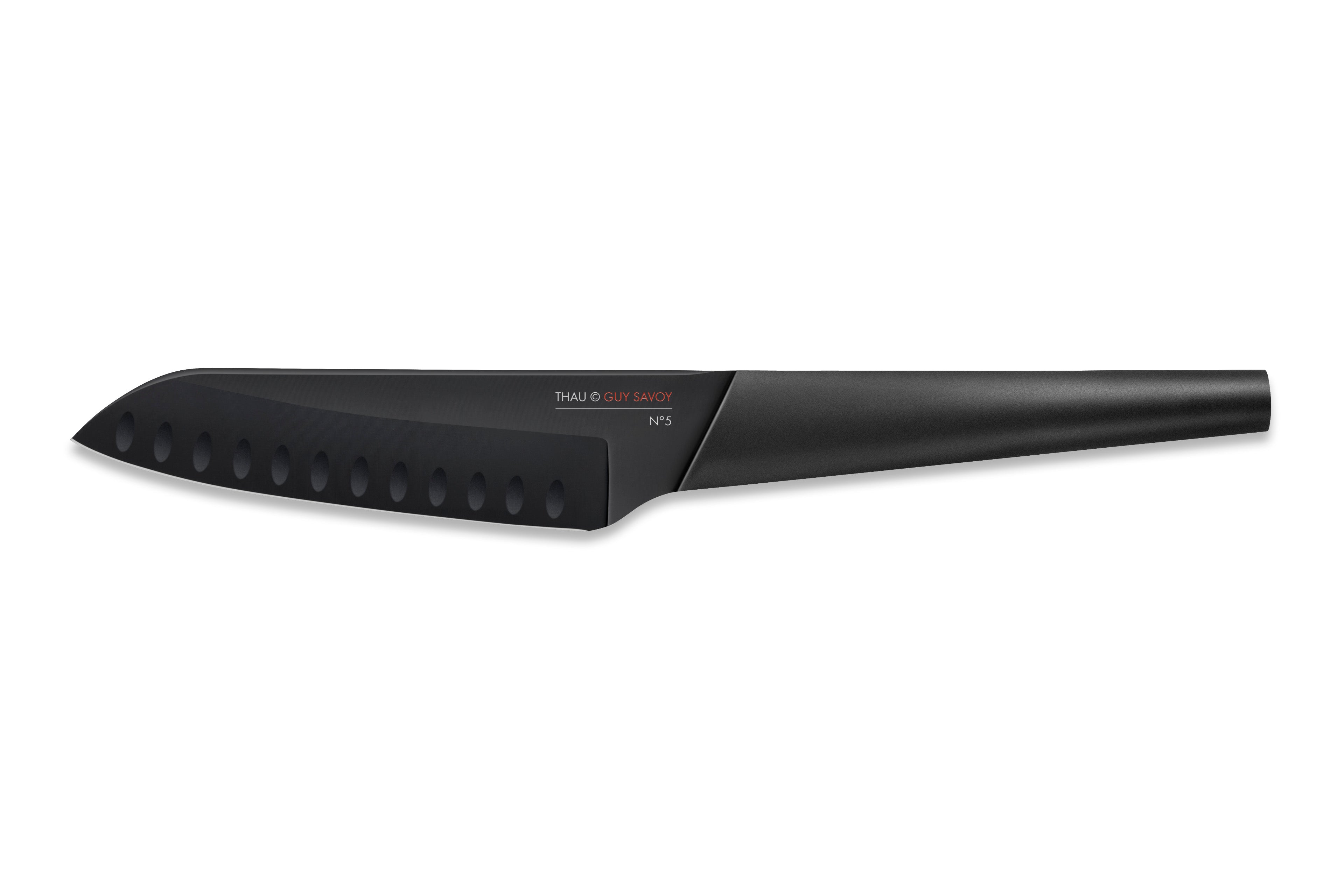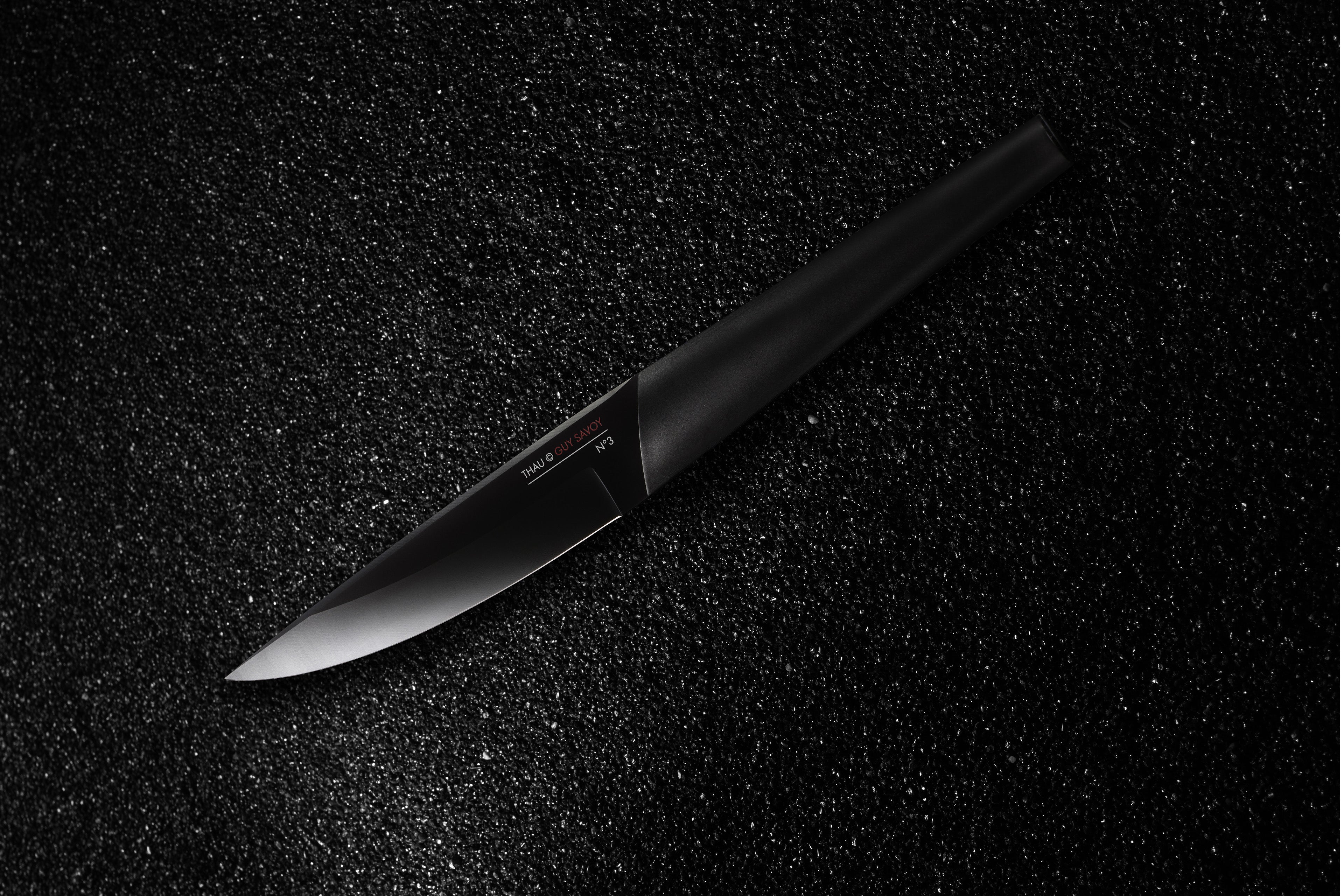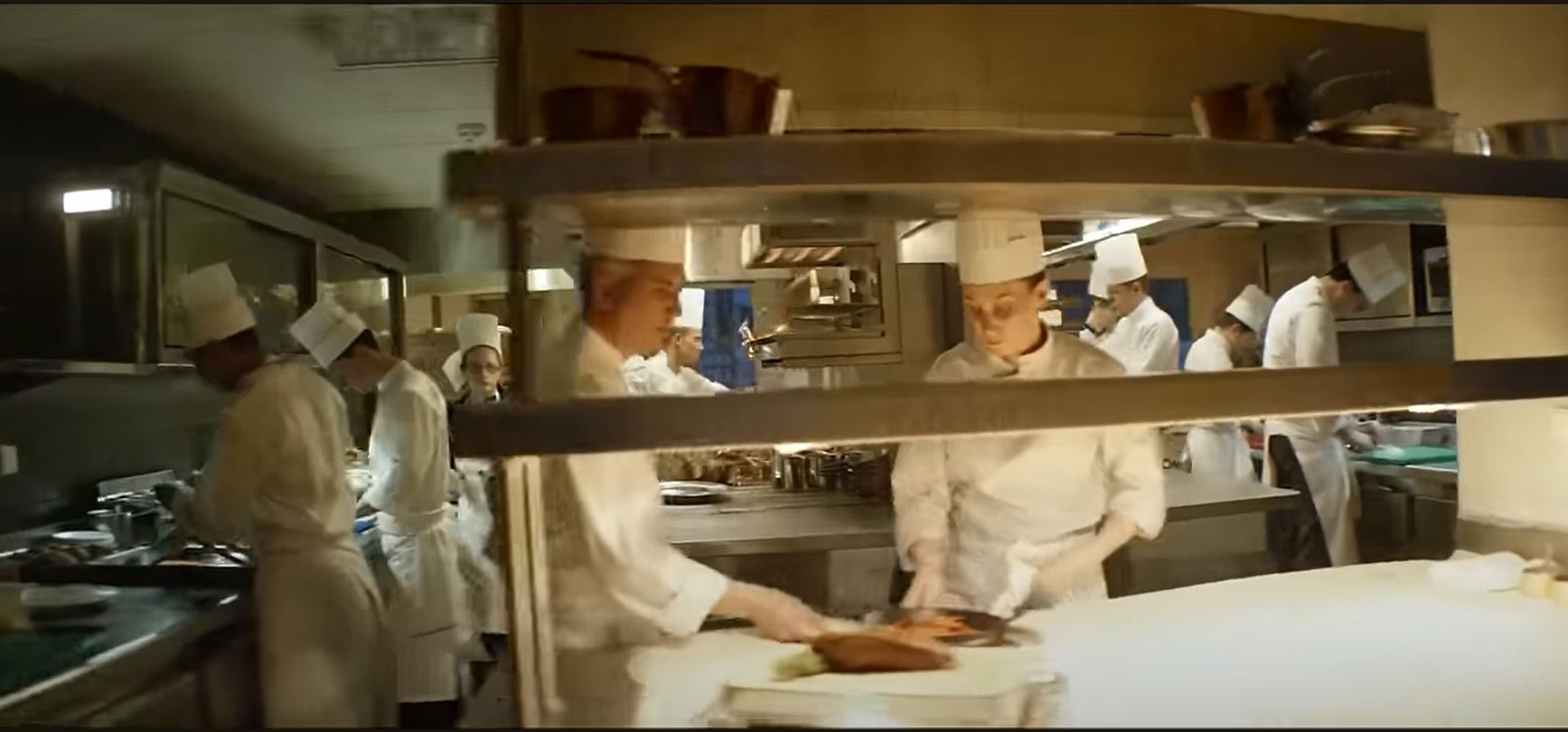


"Thau" No. 5 Santoku knife by Guy Savoy and Bruno Moretti for Tarrerias Bonjean
Its shape, like its name, is of Japanese origin. Its very fine edge allows for the precise slicing of fish and vegetables without rusting.

Spécifications produit
(en g)
430
(en mm)
187.22
(en mm)
175.3
Technical polymer
(Par côté en °)
16
full tang
Alenox
Smooth
54.56

Deux gammes de couteaux ont vu le jour
Fruits d’une observation et d’une réflexion du duo Guy Savoy - Bruno Moretti, de technologies de haut niveau, du savoir-faire et de la capacité de production industrielle de Tarrerias Bonjean, deux gammes de couteaux ont vu le jour : les couteaux de table « Ulu et Savik » d’une part, et les couteaux de cuisine couteaux "de Thau" d’autre part.

Découvrir nos gammes de couteaux
La gamme de couteaux de table « Ulu et Savik » correspond au souhait de Guy Savoy d’établir une continuité entre la cuisine et la salle à manger, les deux univers devant se répondre l’un l’autre.
La gamme de couteaux de cuisine « de Thau » associe les qualités esthétiques aux qualités de confort au travail. Elle est destinée aux passionnés de cuisine, professionnels ou amateurs.
Kitchen knives with an "aero-aqua dynamic" shape!
The blade is deeply engraved rather than simply marked on the surface, unlike most knives; the fine and extremely detailed engraving is then carefully lacquered by hand. This blade, made from hardened steel, consists of mox steel coupled with an almost indestructible PVD treatment that provides exceptional corrosion resistance. This treatment has rendered it black, just like the handle, creating a seamless transition between the two and giving the knife a sleek, aggressive, yet gentle profile—like a gleaming cetacean leaping from the water: an "aero-aqua dynamic" shape!
High comfort kitchen knives
Designer Bruno Moretti observed the work in kitchens and discovered that chefs often hold the same knife for hours, frequently pressing their index finger on the back of the blade for more force and precision. He noted that hands or fingers could sometimes slip on the blade, and that some handles were more suitable for certain hands than others. He set out to create exceptionally comfortable knives for chefs. The handle's dimensions are significantly larger than the standard size, offering the same comfort to all hands, allowing them to position their grip at different levels on the handle based on their shape and size. The angle of the bolster (the 45° connection between the blade and the handle) has been reversed to ensure better hand protection. The back of the blade has been softened to prevent discomfort during prolonged contact with the finger.




















